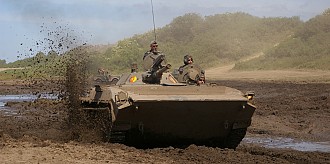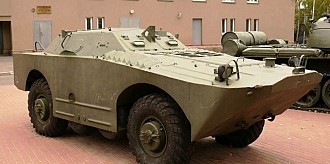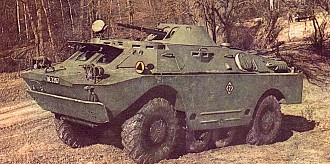Infantry weapons / Anti-tank missiles / 9K11 Malyutka
9K11 Malyutka
General Facts
- TYPE
Anti-tank guided weapon - ORIGIN
 USSR
USSR - NICKNAMES
AT-3 Sagger (NATO reporting name)
HongJian-73 / HJ-73 (Chinese production)
Raad (Iranian production) - DESIGNED
1961 - 1963 - DESIGNER
Kolomna design bureau - PRODUCTION
1963 - present - PRODUCERS
 China
China
 Iran - DIO
Iran - DIO
 North Korea
North Korea
 Russia
Russia
 USSR
USSR
 Yugoslavia
Yugoslavia - QUANTITY
Ten thousands - UNIT COST
Unknown - CHARACTERISTICS
 Low production costs
Low production costs
 Simple and easy to use
Simple and easy to use
 Effective against most armored vehicles
Effective against most armored vehicles
 Ineffective against modern tanks
Ineffective against modern tanks
 Low accuracy for MCLOS models
Low accuracy for MCLOS models
 Large minimum range gap
Large minimum range gap
Introduction
The 9K11 Malyutka is an anti-tank missile system of Soviet origin. It was developed in the early 1960s as a man portable and more capable follow up for the 3M6 Shmel (AT-1 Snapper). In the West it is known under the NATO reporting name AT-3 Sagger. Although considered obsolete, it remains in widespread use while it is cheap and simple to use compared to modern anti-tank guided weapons.
Design
The Malyutka is a wire guided missile with a relatively simple design. The HEAT warhead is located in the front and has an impact fuze. Most of the body consists of the solid propellant rocket motor. Two exhaust nozzles are fitted since the wire and control section for the four foldable wings are located at the end. The original models used MCLOS guidance and later models switched to the more effective SACLOS guidance. These were only used on vehicles and helicopters. The manpack control box consists of a joystick and periscope.
Firepower
The Malyutka is effective against most early Cold War era tanks. The latest versions have a much improved performance, but cannot be considered top of the line. The minimum range of 500 meters results in a dead zone that must be covered with unguided rockets. The maximum range is 3 km. The MCLOS versions have shown a hit ratio of about 25 percent and the SACLOS version of over 60 percent.
Platform
The Malyutka is mainly used from the manpack launch installation and various vehicles. The vehicles include the BMP-1 and BMD-1 mechanized infantry combat vehicles and various tank destroyers based on the BRDM-1 and BRDM-2 reconnaissance vehicles. Additionally it can be launched from several export versions of the Mi-24 and Mi-8 combat helicopters.
Users
The Malyutka was produced in large quantities and was widely used throughout Cold War. It can be considered one of the iconic Soviet weapon systems. The Malyutka was not only used by the USSR and Warsaw Pact nations, it was also widely exported. In the Middle East, Asia and Africa it has seen widespread combat use. Newer and more capable anti-tank guided weapons have replaced the Malyutka in most militaries. However, large quantities remain in third world nations and even second line units in many other nations.
Malyutka missiles
9M14 Malyutka: Original production version introduced in 1963. NATO reporting name AT-3A Sagger A. MCLOS guidance.
9M14M Malyutka-M: Improved 9M14 introduced in 1973. NATO reporting name AT-3B Sagger B. The new motor reduces the flight time. Otherwise it has similar characteristics as the original model, including the MCLOS guidance.
9M14P Malyutka-P: SACLOS guided version with improved warhead. Introduced in 1969. NATO reporting name AT-3C Sagger C. The SACLOS guided models are vehicle or helicopter launched only.
9M14P1 Malyutka-P1: 9M14P with improved warhead with standoff probe.
9M14-2 Malyutka-2: Much improved 9M14P introduced in 1992. NATO reporting name AT-3D Sagger D. Features more capable warhead and improved flight speed.
9M14-2M Malyutka-2M: 9M14-2 missile with tandem HEAT warhead.
9M14-2F Malyutka-2F: 9M14-2 missile with thermobaric warhead for use against structures and troops in the open.
9S415: Control box with joystick and periscopic sight for the manpack launcher. MCLOS guidance only.
9S428: Malyutka system for use on the BMP-1. Consists of launch rail mounted over the 73mm 2A28 cannon and control system within the turret.
| Type | Anti-tank missile |
|---|---|
| Diameter | 0.125 m body, 0.393 m wingspan |
| Length | 860 mm |
| Weight | ? |
| Guidance | MCLOS, wire guided |
|---|---|
| Warhead | HEAT warhead |
| Propulsion | Single-stage solid propellant rocket motor |
| Speed | ? |
| Range | 0.5 km minimum, 3 km maximum |
|---|---|
| Altitude | - |
| Engagement envelope | - |
| Remarks | - |
| Type | Anti-tank missile |
|---|---|
| Diameter | 0.125 m body, 0.393 m wingspan |
| Length | 860 mm |
| Weight | 10.9 kg |
| Guidance | MCLOS, wire guided |
|---|---|
| Warhead | HEAT warhead, 2.6 kg, penetration 400 mm RHA |
| Propulsion | Single-stage solid propellant rocket motor |
| Speed | 115 m/s |
| Range | 0.5 km minimum, 3 km maximum |
|---|---|
| Altitude | - |
| Engagement envelope | - |
| Remarks | - |
| Type | Anti-tank missile |
|---|---|
| Diameter | 0.125 m body, 0.393 m wingspan |
| Length | ? |
| Weight | ? |
| Guidance | SACLOS, wire guided |
|---|---|
| Warhead | HEAT warhead, penetration 460 mm RHA |
| Propulsion | Single-stage solid propellant rocket motor |
| Speed | ? |
| Range | 0.4 km minimum, 3 km maximum |
|---|---|
| Altitude | - |
| Engagement envelope | - |
| Remarks | - |
| Type | Anti-tank missile |
|---|---|
| Diameter | 0.125 m body, 0.393 m wingspan |
| Length | ? |
| Weight | 11.4 kg |
| Guidance | SACLOS, wire guided |
|---|---|
| Warhead | HEAT warhead, 2.6 kg, penetration 520 mm RHA |
| Propulsion | Single-stage solid propellant rocket motor |
| Speed | 115 m/s |
| Range | 0.4 km minimum, 3 km maximum |
|---|---|
| Altitude | - |
| Engagement envelope | - |
| Remarks | - |
| Type | Anti-tank missile |
|---|---|
| Diameter | 0.125 m body, 0.393 m wingspan |
| Length | ? |
| Weight | 12.5 kg |
| Guidance | SACLOS, wire guided |
|---|---|
| Warhead | HEAT warhead, 3.5 kg, penetration 720 mm RHA |
| Propulsion | Single-stage solid propellant rocket motor |
| Speed | 130 m/s |
| Range | 0.4 km minimum, 3 km maximum |
|---|---|
| Altitude | - |
| Engagement envelope | - |
| Remarks | - |
| Type | Anti-tank missile |
|---|---|
| Diameter | 0.125 m body, 0.393 m wingspan |
| Length | 1.015 mm |
| Weight | 13.5 kg |
| Guidance | SACLOS, wire guided |
|---|---|
| Warhead | Tandem HEAT warhead, 4.2 kgHEAT warhead, 3.5 kg, penetration 720 mm RHA behind ERA |
| Propulsion | Single-stage solid propellant rocket motor |
| Speed | 120 m/s |
| Range | 0.4 km minimum, 3 km maximum |
|---|---|
| Altitude | - |
| Engagement envelope | - |
| Remarks | - |
| Type | Anti-tank missile |
|---|---|
| Diameter | 0.125 m body, 0.393 m wingspan |
| Length | ? |
| Weight | 12 kg |
| Guidance | SACLOS, wire guided |
|---|---|
| Warhead | Thermobaric warhead, 3.0 kg |
| Propulsion | Single-stage solid propellant rocket motor |
| Speed | 130 m/s |
| Range | 0.4 km minimum, 3 km maximum |
|---|---|
| Altitude | - |
| Engagement envelope | - |
| Remarks | - |
HJ-73
The HJ-73 is a Chinese development of the Malyutka and was a direct copy of the 9M14M at first. The designation stands for Hong Jian 73 which translates to Red Arrow 73. It is used with MCLOS and SACLOS manpack launchers and various vehicles.
HJ-73: Original HJ-73 introduced in 1979. Direct copy of 9M14M with MCLOS guidance.
HJ-73B: SACLOS version of original HJ-73 using components developed for HJ-8. Has a selectable MCLOS mode for short range targets and use with MCLOS launch posts.
HJ-73C: SACLOS only version with extended nose probe for increased effectiveness against ERA.
HJ-73D: HJ-73C with small fins on nose probe.
| Type | Anti-tank missile |
|---|---|
| Diameter | 0.12 m body, 0.39 m wingspan |
| Length | ? |
| Weight | 10.9 kg |
| Guidance | MCLOS, wire guided |
|---|---|
| Warhead | HEAT warhead, 2.6 kg, penetration 400 mm RHA |
| Propulsion | Single-stage solid propellant rocket motor |
| Speed | 115 m/s |
| Range | 0.5 km minimum, 3 km maximum |
|---|---|
| Altitude | - |
| Engagement envelope | - |
| Remarks | - |
| Type | Anti-tank missile |
|---|---|
| Diameter | 0.12 m body, 0.39 m wingspan |
| Length | 868 mm |
| Weight | 11.3 kg |
| Guidance | SACLOS, wire guided |
|---|---|
| Warhead | HEAT warhead, penetration >500 mm RHA |
| Propulsion | Single-stage solid propellant rocket motor |
| Speed | 120 m/s |
| Range | 0.5 km minimum, 3 km maximum |
|---|---|
| Altitude | - |
| Engagement envelope | - |
| Remarks | - |
Raad
The Raad is the Iranian production version of the 9K11 Malyutka. Possibly it is a licensed production of the original HJ-73. The I-Raad missiles are heavily influenced by Chinese developments of the HJ-73C missile and share many components.
Raad: Direct copy of 9M14M Malyutka-M with MCLOS guidance.
I-Raad: Improved Raad missile. Uses SACLOS guidance from remote tripod mounted sight unit, similar to the Chinese HJ-73C.
I-Raad T: Improved Raad missile with tandem HEAT warhead. Has an extended nose probe similar to the HJ-73D. The tandem HEAT warhead can also be fitted to the I-Raad.

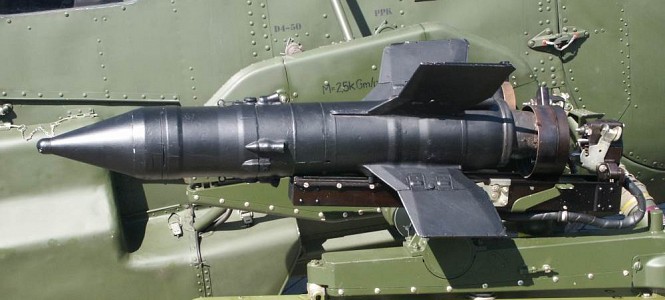
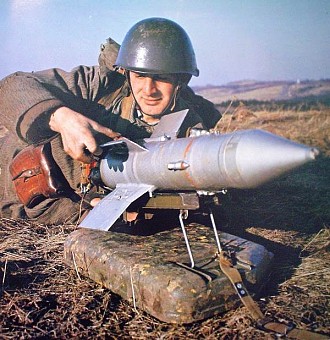
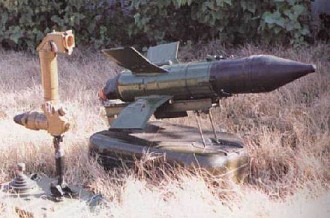
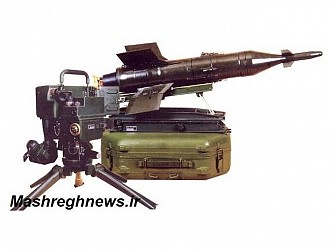
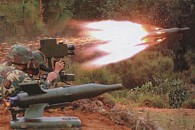

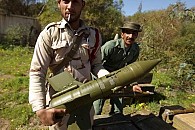
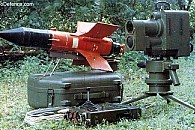

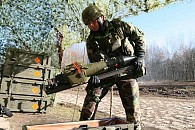
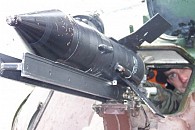

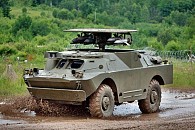
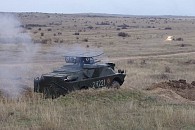
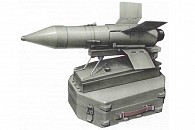
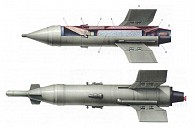
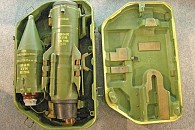

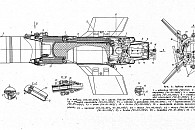
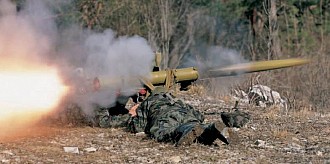

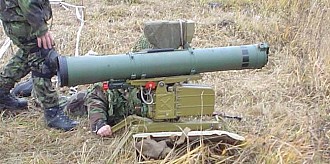
/--/img/ws/msl_atm_at6_o1.jpg)
